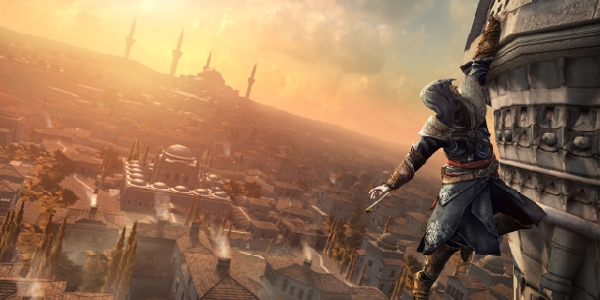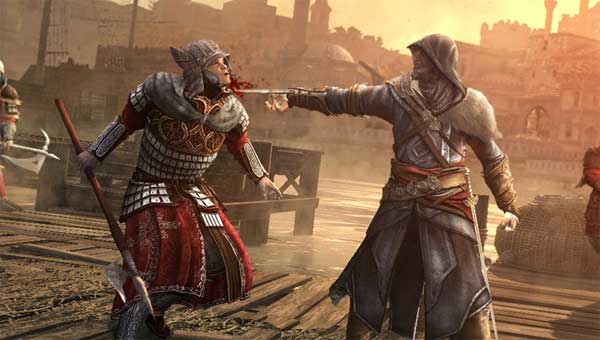As Ezio Auditore da Firenze, my ventures through Constantinople beckon for my participation.
Be it a plaza bustling with life, a secluded Assassin’s den, or a distant Gypsy camp, the Templar-ridden city calls out with noise as diverse as the lively inhabitants that walk amongst it. I heed these calls with enthusiasm, entrenching myself in the city with a Templar’s demise in mind.
One welcome diversion from the Bayezid, Galata, Constantine, and Imperial districts of Constantinople are the locations of esoteric mementos. They’re hidden away under an environment laden with puzzles, traps, and architecture notched with hand and foot holds. When I’m not immersed by the hypnotic allure of the city, these locations exude the same compelling aura. Again, I feel like part of the world, like the Animus is fiction.
Using hidden Masyaf mementos, I’m forced away from the setting I’ve grown so fond of, placed in the memory of a familiar assassin, Altaïr Ibn-La’Ahad. These memories are of paramount narrative importance, but jumping from setting to setting and memory to memory is, to say the least, much less exhilarating than one of Ezio’s treks to and from the rooftops.
I’m tired of the constant change of pace, setting, and tone while playing Assassin’s Creed: Revelations. The head-scratching, eyebrow-raising, and perplexing sci-fi elements of the narrative that force this change are reluctantly overshadowed by the thrilling action the series is known for. Despite this, series norms like Subject 16, the Animus, Pieces of Eden, and the contemporary public face of the Templars, Abstergo Industries, all make an appearance; shrouded in mystery and his intentions hazy, Subject 16 is the most confusing. Assassin’s Creed: Revelations unravels his mystery with poignance, but Subject 16 serves as an equally poignant reminder of Desmond’s reality as a puppet inside the Animus. My agency inside Constantinople is challenged yet again.
A scene in the game flashes forward a decade or so in Ezio’s life. Complete with a hunched back and cripplingly slow walk, it becomes clear that Ezio is far from omnipotent and the end of his days are nigh. Now aware of Ezio’s fate, the player is brought back to the era that much of the game is set in; while Ezio is still quickly approaching his dotage, his skills in action imply much the opposite. His charm or purpose have yet to ebb either, which is much of why Assassin’s Creed: Revelations is one of the easiest games in the series to inhabit. It’s a joy to step out of a cistern or memory knowing that such an aptly realized and energetic city awaits.
Constantinople once again calls my name. Ezio replies with a hidden blade to the neck of a Templar, then a swift disappearance into the bustle.



















